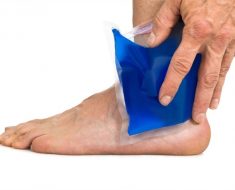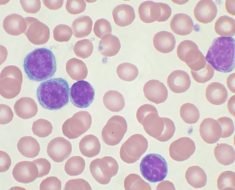Iodine is a nonmetallic basic element and an essential mineral for the human body. It is pivotal in the synthesis of thyroid hormones, triiodothyronine (T3) and thyroxine (T4), and hence essential for normal function of the thyroid gland. Radioiodine represents a radioactive form of iodine most often used in the treatment of thyroid diseases.
Radioiodine isotopes originate in fission and many other nuclear reactions. At least 37 Iodine isotopes are listed in the literature, with mass numbers ranging from 108 to 144. All of them, with the exception of Iodine-127, are radioactive, with half-lives ranging from 1 second (Iodine-140) to 16 million years (Iodine-129).
The most commonly used radioisotope of iodine in pharmaceutical industry and medicine is Iodine-131 (I-131). Many types of cancer and other non-malignant disease can be successfully treated with radiation emitted by this radioisotope. Radioactive I-131 is the most frequently used radiopharmaceutical for diseases such as thyroid cancer and hyperthyroidism.
Radiobiological and physical properties of radioiodine
I-131 is a both beta and gamma-emitting radionuclide with a physical half-life of 8.02 days. The average range of the beta-particles in soft tissue is approximately two millimeters, and subsequent radiobiological effects of this radioiodine can be direct or indirect, which is important to distinguish when deciding on an optimal dose.
Direct effects are pertaining to radiation deposit within DNA, whereas indirect effects produce free radicals that can in turn react with the critical macromolecules. As ionizing radiation loses the energy, the damage of the DNA molecule and cellular dysfunction ensues, which results with the cell death.
I-131 is available as sodium iodine in capsules or as a liquid solution for oral ingestion. As it has a rapid and complete absorption in the upper intestine, intravenous route of administration is used only for individuals unable to ingest either of these two forms. It must be noted that the capsules are safer than liquids, as the irritation of oral mucosa is not so pronounced, and there is less radioactivity released into the air.
Use in therapy and diagnostics
Radioactive I-131 has a substantially high success rate in the treatment of individuals with both benign and malignant thyroid diseases since 1940s. It is considered a safe and relatively inexpensive treatment, although it renders the patient radioactive (which can be a hazard to the hospital staff, family members or general public).
The radioiodine is taken up from the blood by sodium-iodide symporter of the thyroid akin to natural iodine; therefore it accumulates within thyroid follicular cells. Beta-particles of I-131 can then destroy the follicular cell, slowly leading to reduction in the volume of the thyroid gland and control of the pathological state.
The main indications for I-131 therapy are thyroid cancer, non-toxic multinodular goiter and hyperthyroidism states due to Grave’s disease, toxic multinodular goiter or hyperfunctioning thyroid nodules. Contraindications for this type of therapy are pregnancy, breast feeding and severe uncontrolled thyrotoxicosis.
I-131 was also used for the assessment of renal function, starting in 1956 when Taplin and his co-workers used this radioiodine and collimated external scintillation detectors to measure time-related clearance functions of the kidney. Antibodies labeled with radioiodine are increasingly being used for tumor detection.
Sources
- jnm.snmjournals.org/content/46/1_suppl/28S.full.pdf
- http://www.ncbi.nlm.nih.gov/pmc/articles/PMC3336179/
- http://www.ncbi.nlm.nih.gov/pmc/articles/PMC3502018/
- Guhlke S, Verbruggen AM, Vallabhajosula S. Radiochemistry and Radiopharmacy. In: Biersack HJ, Freeman LM, editors. Clinical Nuclear Medicine. Springer-Verlag Berlin Heidelberg New York, 2007; pp. 34-76.
- Dietlein M, Schmidt M. Radioiodine Therapy of Hyperthyroidism (Toxic Goiter, Hyperfunctioning Nodule) and Non-Toxic Goiter: Procedures and Guidelines. In: Baum RP, editor. Therapeutic Nuclear Medicine. Springer-Verlag Berlin Helidelberg, 2014; pp. 335-346.
Further Reading
- All Radioiodine Content
- Radioiodine Production
- Iodine-131 Exposure
- Iodine-131 Medical Use
Last Updated: Aug 23, 2018

Written by
Dr. Tomislav Meštrović
Dr. Tomislav Meštrović is a medical doctor (MD) with a Ph.D. in biomedical and health sciences, specialist in the field of clinical microbiology, and an Assistant Professor at Croatia's youngest university – University North. In addition to his interest in clinical, research and lecturing activities, his immense passion for medical writing and scientific communication goes back to his student days. He enjoys contributing back to the community. In his spare time, Tomislav is a movie buff and an avid traveler.
Source: Read Full Article





